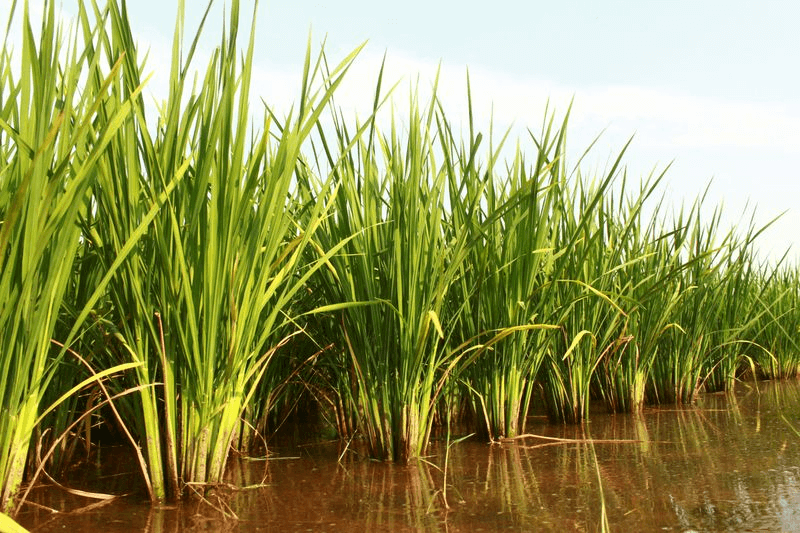Tags
India eyes record rice harvest; Punjab has quality, seed issues
The Punjab government promoted PR-126 to conserve groundwater, but experts argue that the rush to adopt this variety led to inadequate seed supply, allowing spurious and poor-quality hybrid seeds to flood the market.
Vibha Sharma/Tribune News Service

The Centre has released its first advance estimate for the Kharif season, predicting a record food grain harvest of 1,647.05 lakh metric tonnes (LMT) in the 2024-25 crop year. This represents an increase of 89.37 LMT over the previous year’s production and 124.59 LMT above the average production.
The Kharif rice production is also expected to reach a record high of 1,199.34 LMT, up 66.75 LMT from the previous year and 114.83 LMT above the average. This growth is driven by strong production of rice, jowar, and maize.
The estimated record rice production coincides with ongoing harvesting and lifting issues in Punjab, India’s primary source of rice for the Public Distribution System (PDS). While a robust rice output boosts exports and curbs inflation, it also heightens concerns about Punjab’s ordinary rice variety.
India already has a surplus of rice, exceeding the annual requirements for free rations under the Food Security Act. Experts note, “With 80 crore people receiving free rations, rice-eating states are rejecting Punjab rice due to changing consumption patterns and increasing wheat demand. Additionally, the quality of Punjab rice is unpopular, and other states are also producing paddy. India’s rice surplus suggests Punjab should explore alternative crops.”
Punjab
This year, Punjab’s agriculture sector is grappling with issues surrounding the PR-126 paddy variety, introduced in 2016. Millers are seeking a reduction in the 67 per cent out-turn ratio (OTR) set by the Food Corporation of India (FCI), citing 4-5 per cent lower yields.
The Punjab government promoted PR-126 to conserve groundwater, but experts argue that the rush to adopt this variety led to inadequate seed supply, allowing spurious and poor-quality hybrid seeds to flood the market.
“This is unprecedented,” experts note, highlighting the severity of the issue. The controversy has taken on political undertones, with fingers being pointed in various directions.
OTR
The Out-Turn Ratio (OTR) refers to the yield millers obtain after processing paddy. The Centre sets uniform OTR norms across India, regardless of seed variety. National procurement follows standardised specifications.
Punjab millers claim PR-126 yields 4-5 per cent lower OTR than usual and are seeking a state-specific reduction. In response, the Centre has commissioned IIT Kharagpur to review OTR norms and conduct tests in major rice-producing states, including Punjab.
The IIT team’s upcoming visit to Punjab on November 17-19 is crucial for resolving the ongoing issues in the state’s rice milling sector. Ranjit Singh Jossan, vice-president of Punjab Rice Industry Association, said, “The Centre should utilise the test results to determine the acceptable percentage of rice and broken rice for millers, enabling the sector to navigate this critical challenge.”
The association has already raised concerns with the Punjab government and Union Minister Prahlad Joshi. However, officials maintain that OTR norms cannot be lowered for one state, and any relaxations will apply uniformly across India. This means Punjab may need to wait for reports from all states before any adjustments are made.
As per FCI norms, for every 100 kg of paddy, the miller has to provide at least 67 kg rice with 75 per cent of it being full grain.
PR-126
According to Punjab Agricultural University (PAU), PR-126 scores high on yield potential, per day productivity and per unit inputs (waters and pesticides). Compared to traditional varieties like PUSA-44, PR-126 and PR-121 require significantly less water – 4,000 litres per kg versus 5,000-6,000 litres.
Those in favour of PR-126 say hybrid/spurious varieties marketed in the name of PR- 126 caused all the problem—that is significantly lower OTR this year.
“PR-126 is tried and tested but only the one by PAU, not the seeds sold by unscrupulous seed sellers. University seeds can be reprocessed but other hybrid seeds/spurious varieties cannot be reprocessed, which is another issue,” PAU officials say.
Unauthorised, hybrid seeds in name of PR-126
Jossan says action should be taken against the sale of unregulated seeds sold as PR-126. “In the last five to six years, only 5-10 per cent farmers adopted PR-126. The Punjab government is promoting it as an alternative to PUSA-144, which takes 140-150 days to mature. However, no effort was made at the government level to ensure availability of genuine PR-126 seed to farmers as a result, when farmers were sold unregistered and non-recommended seeds. More than 70 per cent of seeds sold as PR-126 contained unapproved variants,” he said. Hybrid rice mixed with PR-126 lowers yields and increases breakage.
According to PAU, in 2022, PR-126 was the most popular rice variety occupying 22 per cent of area followed by PR-121, occupying 14 per cent area. It has clear translucent grains with high total and head rice recoveries. The variety resists attack of several prevalent pathotypes of bacterial blight pathogen in Punjab and its average paddy yield is 30 quintals per acre. The PR-126 variety reaches a height of 102 cm and matures in 123-125 days. Meanwhile, the jury is out.
https://www.tribuneindia.com/news/india/india-eyes-record-rice-harvest-but-punjab-grapples-with-quality-seed-issues/Published Date: November 10, 2024






